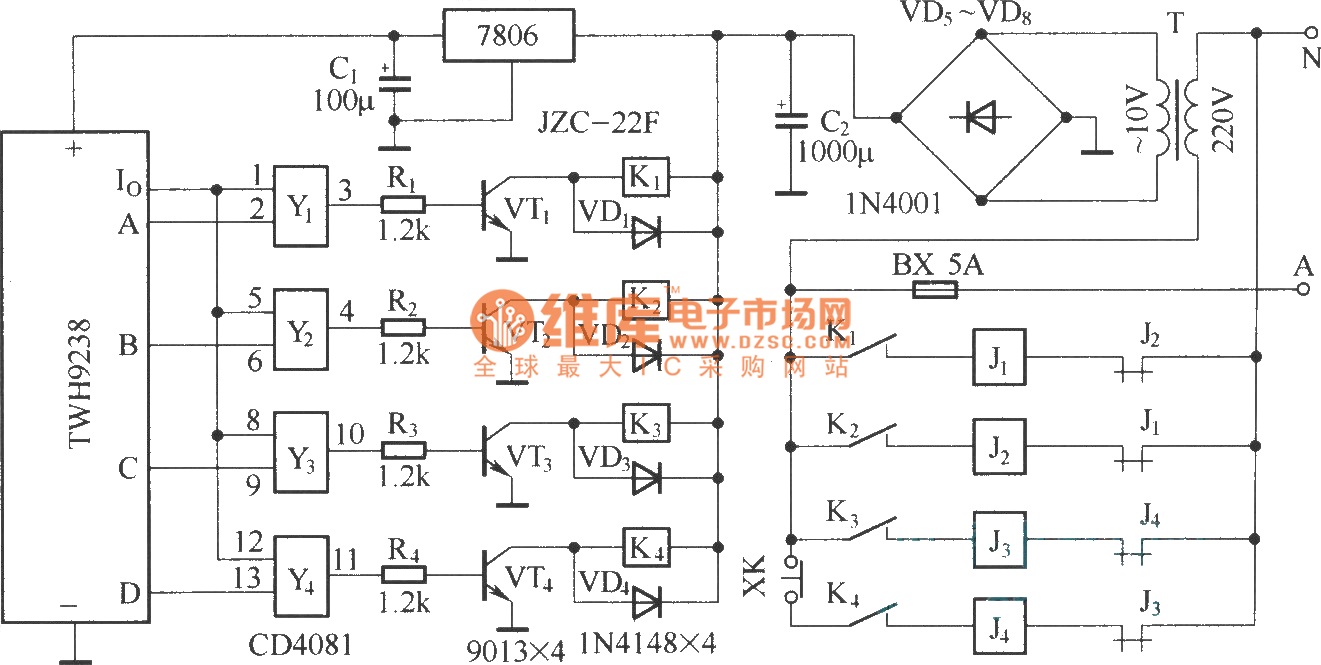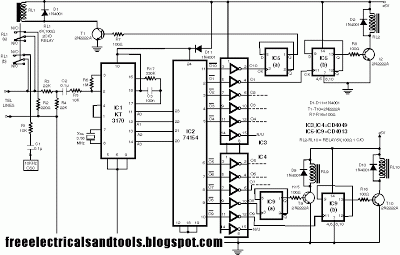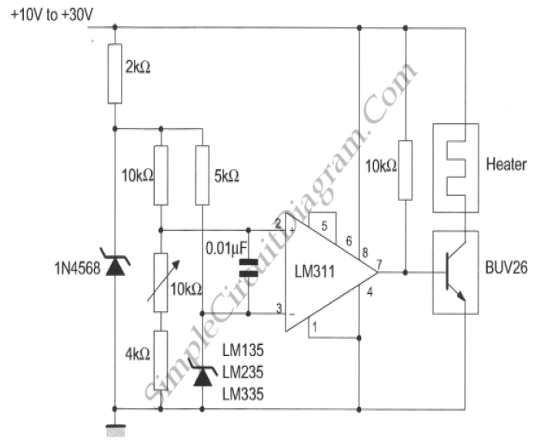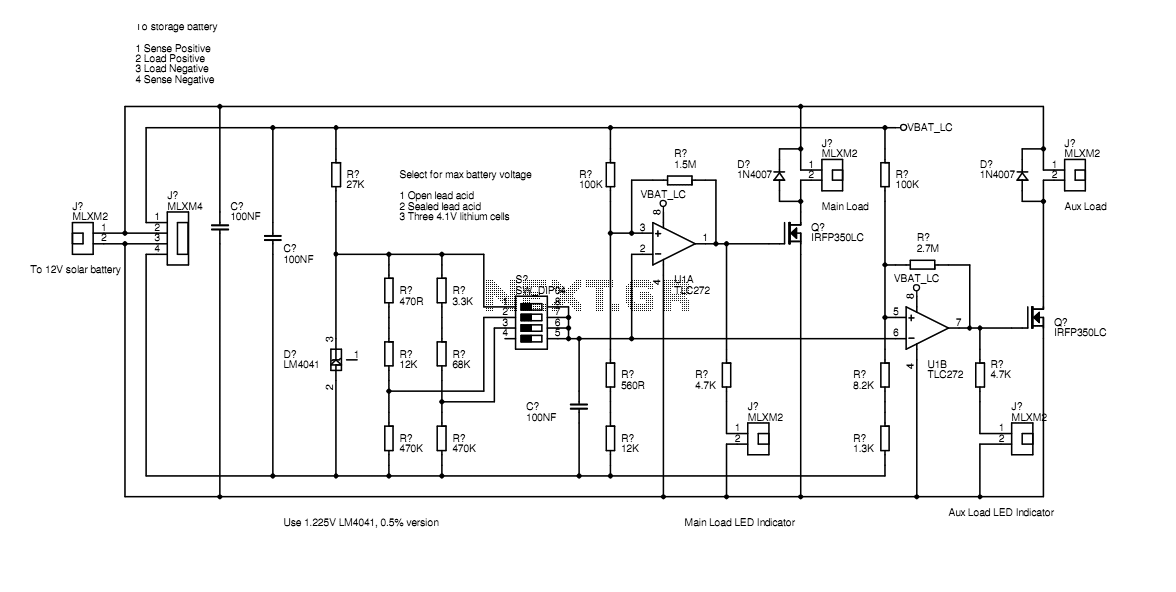
Auto Loudness Control
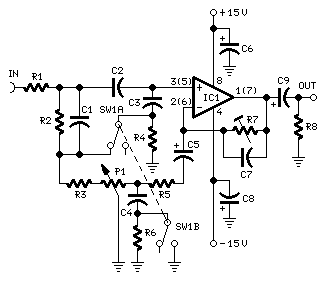
Simple add-on module. A simple approach to this problem can be done inserting a circuit in the preamplifier stage, capable of varying automatically the frequency response of the entire audio chain in respect to the position of the control knob, in order to keep ideal listening conditions under different listening levels. Fortunately, the human ear is not too critical, so a rather simple circuit can provide a satisfactory performance through a 40dB range. Switchable "Control-flat" option. More: The circuit is shown with SW1 in the "Control-flat" position, i.e. without the Automatic Loudness Control. In this position the circuit acts as a linear preamplifier stage, with the voltage gain set by means of Trimmer R7. Switching SW1 in the
The described add-on module functions as an enhancement to an audio preamplifier stage, specifically designed to adapt the frequency response based on the control knob's position. This automatic adjustment is crucial for maintaining optimal listening conditions across various volume levels, leveraging the human ear's tolerance for minor discrepancies in audio fidelity.
The circuit architecture typically includes a variable resistor or potentiometer that acts as the control knob. This component allows the user to set the desired loudness level, which is then translated into adjustments in the circuit's frequency response. The design incorporates a feedback mechanism that ensures the audio output remains consistent, even when the input signal varies significantly.
In the "Control-flat" mode, as indicated by the position of switch SW1, the circuit operates as a linear preamplifier. This configuration bypasses the automatic loudness control feature, allowing for a direct amplification of the audio signal without any frequency response alteration. The gain in this mode is adjustable through Trimmer R7, providing the user with the flexibility to fine-tune the output level to suit their listening preferences.
The circuit's design is optimized to deliver satisfactory performance across a dynamic range of 40dB, accommodating various audio sources and listening environments. This range is particularly beneficial in scenarios where the listening level fluctuates, as it ensures that the audio remains clear and intelligible without introducing unwanted distortion or coloration.
In summary, this add-on module represents a practical solution for enhancing audio playback, offering both automatic frequency response adjustment and manual control options, thus catering to diverse listening conditions and user preferences.Simple add-on module. A simple approach to this problem can be done inserting a circuit in the preamplifier stage, capable of varying automatically the frequency response of the entire audio chain in respect to the position of the control knob, in order to keep ideal listening conditions under different listening levels. Fortunately, the human ear is not too critical, so a rather simple circuit can provide a satisfactory performance through a 40dB range.
Switchable "Control-flat" option. The circuit is shown with SW1 in the "Control-flat" position, i.e. without the Automatic Loudness Control. In this position the circuit acts as a linear preamplifier stage, with the voltage gain set by means of Trimmer R7. Switching SW1 in the 🔗 External reference
The described add-on module functions as an enhancement to an audio preamplifier stage, specifically designed to adapt the frequency response based on the control knob's position. This automatic adjustment is crucial for maintaining optimal listening conditions across various volume levels, leveraging the human ear's tolerance for minor discrepancies in audio fidelity.
The circuit architecture typically includes a variable resistor or potentiometer that acts as the control knob. This component allows the user to set the desired loudness level, which is then translated into adjustments in the circuit's frequency response. The design incorporates a feedback mechanism that ensures the audio output remains consistent, even when the input signal varies significantly.
In the "Control-flat" mode, as indicated by the position of switch SW1, the circuit operates as a linear preamplifier. This configuration bypasses the automatic loudness control feature, allowing for a direct amplification of the audio signal without any frequency response alteration. The gain in this mode is adjustable through Trimmer R7, providing the user with the flexibility to fine-tune the output level to suit their listening preferences.
The circuit's design is optimized to deliver satisfactory performance across a dynamic range of 40dB, accommodating various audio sources and listening environments. This range is particularly beneficial in scenarios where the listening level fluctuates, as it ensures that the audio remains clear and intelligible without introducing unwanted distortion or coloration.
In summary, this add-on module represents a practical solution for enhancing audio playback, offering both automatic frequency response adjustment and manual control options, thus catering to diverse listening conditions and user preferences.Simple add-on module. A simple approach to this problem can be done inserting a circuit in the preamplifier stage, capable of varying automatically the frequency response of the entire audio chain in respect to the position of the control knob, in order to keep ideal listening conditions under different listening levels. Fortunately, the human ear is not too critical, so a rather simple circuit can provide a satisfactory performance through a 40dB range.
Switchable "Control-flat" option. The circuit is shown with SW1 in the "Control-flat" position, i.e. without the Automatic Loudness Control. In this position the circuit acts as a linear preamplifier stage, with the voltage gain set by means of Trimmer R7. Switching SW1 in the 🔗 External reference

